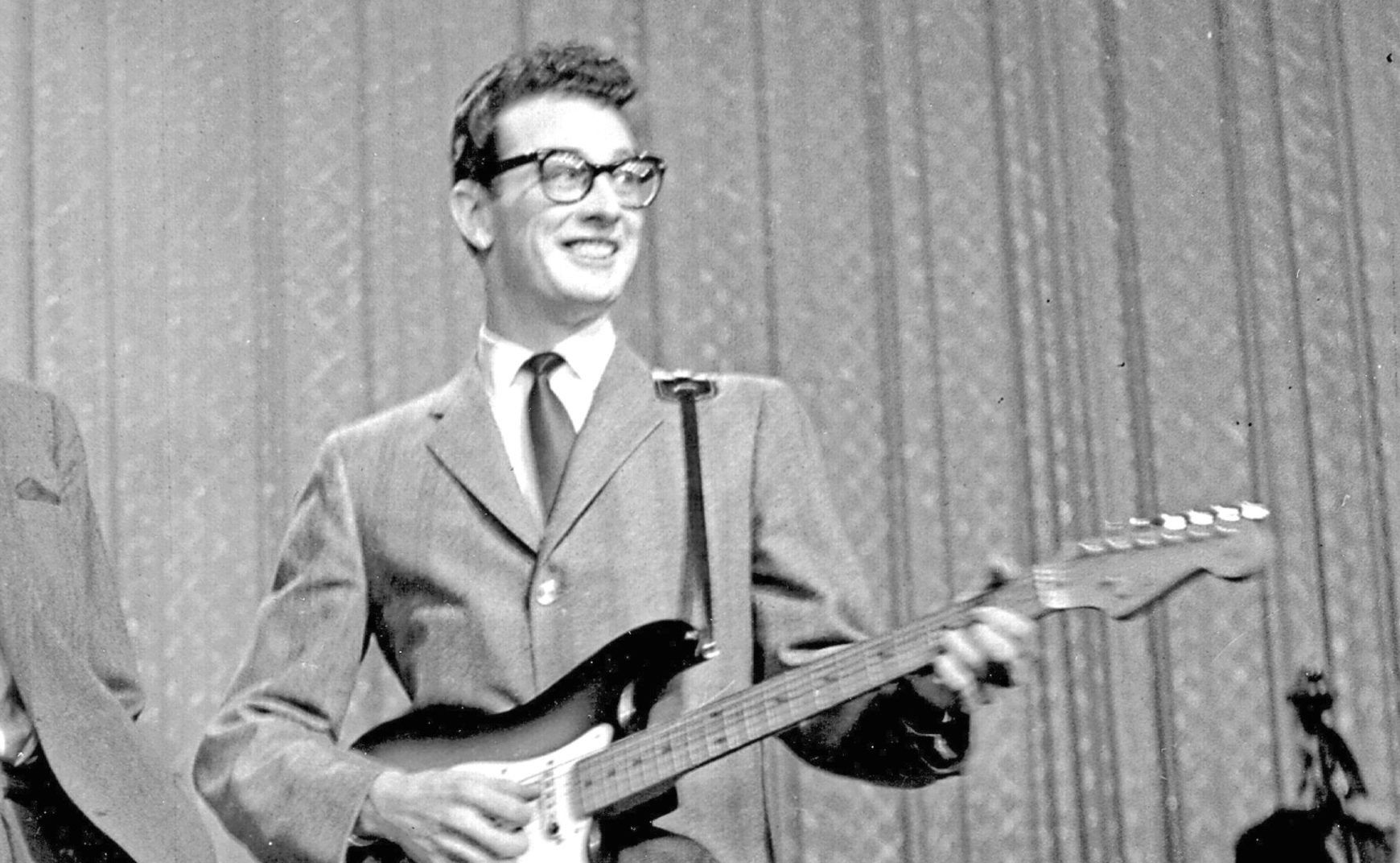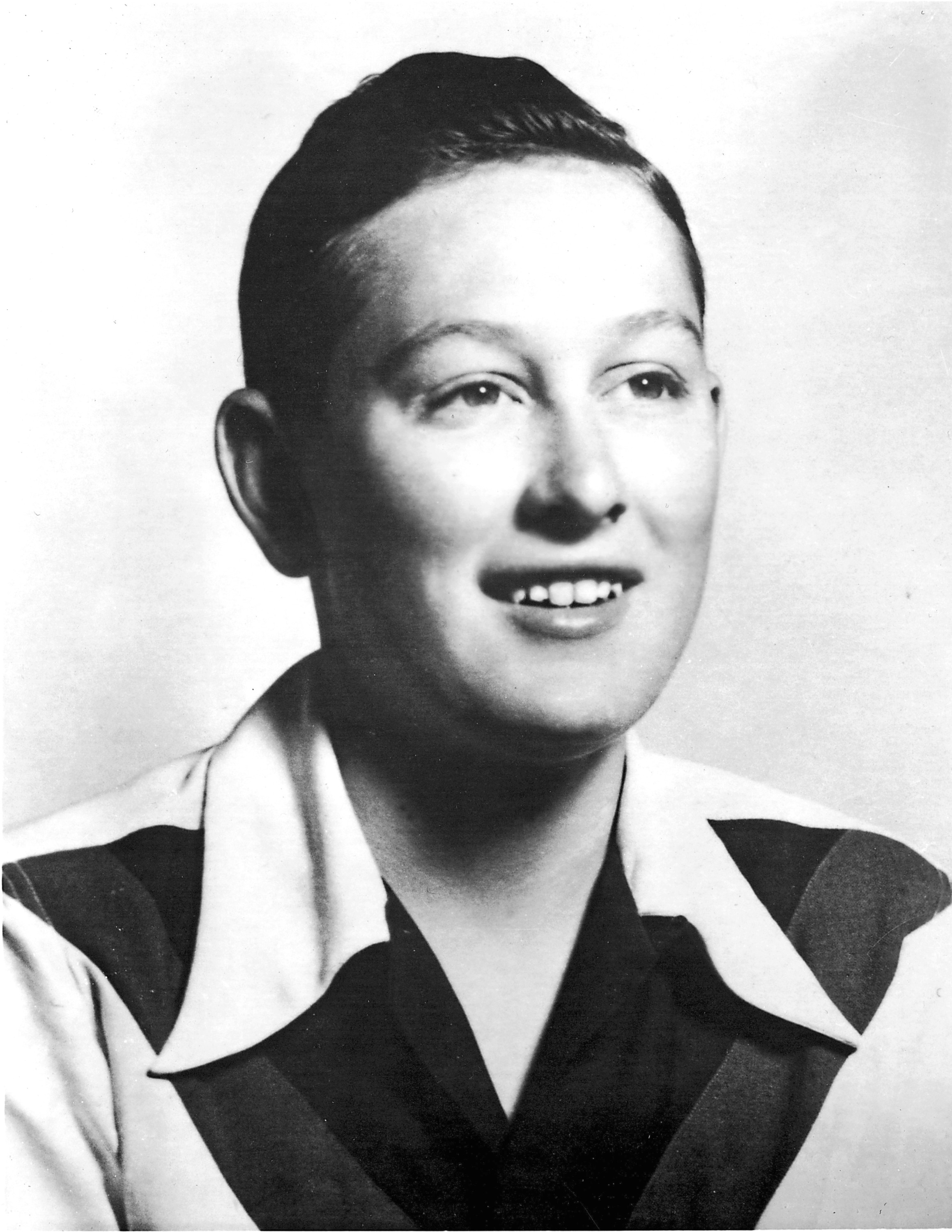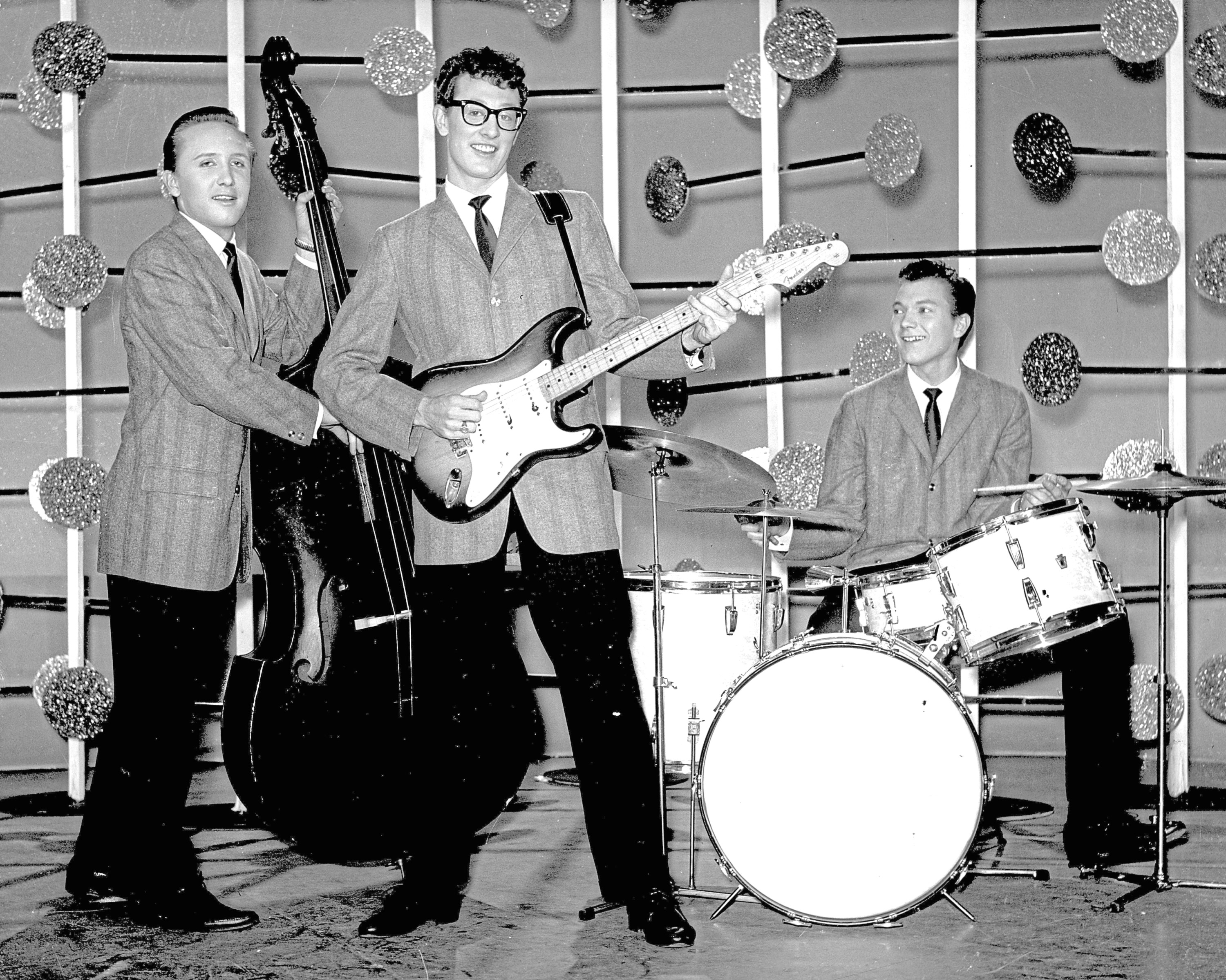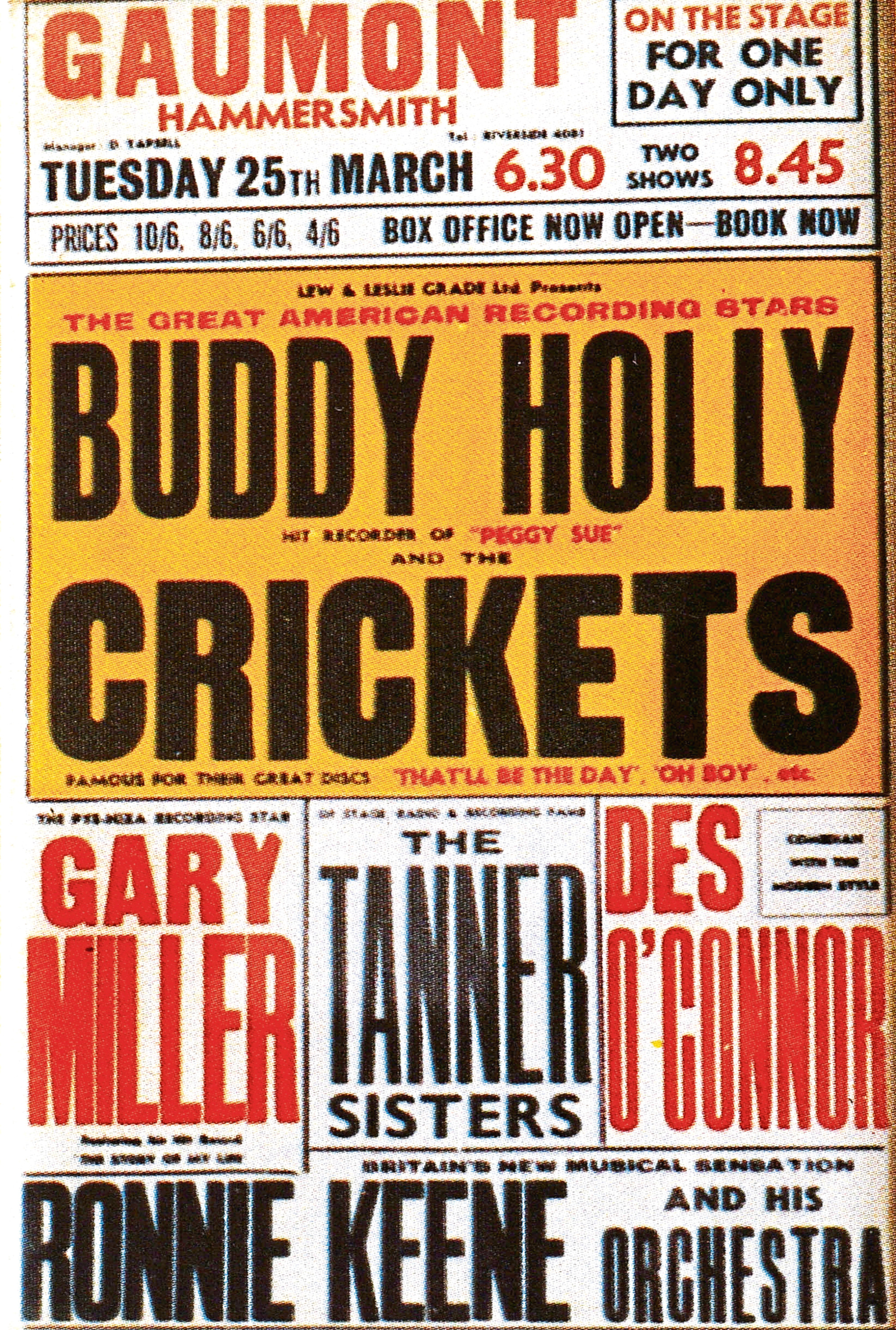
HE was only with us for 22 years, but Buddy Holly’s musical legacy is right up there with the best of them.
Holly died 60 years ago this year, but his influence has spread far and wide and continues to do so.
In 1982, Paul McCartney attended a fancy dress rock ’n’ roll event dressed as him and John Lennon was among those fans queueing to see Holly when he played Liverpool in 1958.
From Dylan to Springsteen, The Shadows to Led Zeppelin, they all got inspired by the young American in brainy specs and fresh-faced appearance.
Holly himself had been driven to succeed in music after opening for Elvis Presley in 1955 – over the three gigs where he did so, he and his band swiftly moved from country and western to rock ’n’ roll.
He was only 18 then, having been born Charles Hardin Holley on September 7 1936.
Lubbock, Texas is not famous for much, but it was where Buddy’s family had moved during the Great Depression and because of his brief but amazing career, it is now well-known.
The fourth child of Lawrence Odell “LO” Holley and Ella Pauline Drake, the young boy learned to sing and play guitar alongside his older siblings Larry, Travis and Patricia Lou.
There was a bit of English, Welsh and Native American in his roots and he got the nickname Buddy while still a kid.
With his brothers doing various local talent shows, the young Buddy popped up with them just once, playing fiddle – well, pretending, anyway.
Larry had put grease on the strings so it remained mercifully silent.
By 11, Buddy had turned his attention to the piano, but soon gave up lessons and switched to guitar after a pal at school played one on the bus home.
Travis taught him the rudiments and from then on it was well-nigh impossible to get him to put the thing down, even to come and have his dinner.
By the time he was 16 he had already appeared on local TV, going on to form his first band, Buddy and Bob, with a friend, Bob Montgomery.
That would lead to a bit of local fame, clinching those priceless gigs supporting Presley. And when Buddy opened for Bill Haley & His Comets, a scout took note.
Eddie Crandall was the man with an eye for future superstars and got him a deal with Decca Records.
With a distinctive singing style and quickly mastering the guitar, Holly had a very nice instrument, but something just was not quite right about it.
When he got the guitar model he really wanted, it changed his world and it would change the world of music, too.
It would also prove very, very good for the Fender guitar company – and still does.
The guitar he preferred has become almost as much a Buddy Holly trademark as his spectacles, but if it had not been for a bit of good timing, many have wondered if his career might have been very different.
The young Buddy had a gold Gibson Les Paul and at 17 he regularly visited the Adair Music Company in Lubbock, where he got guitar lessons from local musician Clyde Hankins.
He had been most taken with Hankins’ fancy new Fender Stratocaster, a completely different shape and much lighter than the Gibson.
“I was in here a couple of days ago and I had a lesson with Mr Hankins,” Buddy told Mr Adair, the owner. “He was playing one of those new Fender guitars, called a Strato-something.”
In his hands and on TV appearances seen by millions in America, Buddy Holly would make the Fender Stratocaster an icon, helping it sell like hot cakes, as it does to this day.
As many musical experts have pointed out, you could and still can get marvellous music out of a Gibson Les Paul, but not the light, jangly, poppy goodness that Buddy could get out of his Fender Strat.
From Hank Marvin to Jimi Hendrix, Eric Clapton to Mark Knopfler, the Strat is king and it was Buddy Holly who first made them want one so bad it hurt.
It is almost impossible to imagine Peggy Sue or That’ll Be The Day on the thicker, heavier-sounding Les Paul, a guitar that is adored today but looked a bit old-fashioned in the early years of the Stratocaster.
At Decca, his recordings were overseen by producer Owen Bradley, but again it was the sound itself that was leaving Buddy disappointed.
In frustration, he met another producer, Norman Petty, and went to New Mexico to record a demo of That’ll Be The Day plus a few other numbers.
He had Jerry Allison, three years his junior, on drums, and at just 17 Joe B Mauldin on bass.
Petty must have liked what he was hearing, signing them up and becoming their manager.
He sent the demo to Brunswick Records, who released it as recorded by “The Crickets”.
In September of ’57, while he was celebrating his 21st birthday, Holly saw the single top the charts in both the USA and UK.
The following month, the release of Peggy Sue went rather well, too.
An album, Chirping Crickets, came out in the November – they did not mess about in those days – and it reached No 5 in the British charts.
Two appearances on the Ed Sullivan Show in the first weeks of 1958 were followed by a wonderful tour of the UK and another in Australia.
Almost as if he knew life was going to be dreadfully short, Buddy Holly was conquering the world at breakneck speed.
One young female fan described the Holly gig at Liverpool Philharmonic on March 20 1958, one of two concerts that day, at 6.30 and 8.30.
This was the one where John Lennon was among the future stars standing outside, desperate to check out this guy with the Stratocaster and the ridiculously catchy songs.
However, Buddy’s entrance on to the stage was not quite as slick as he might have hoped.
He strode on with his guitar, plugged the cable into his amp and heard absolutely nothing.
Baffled, he followed the wire from the back of the amp, off the stage, right up to the wall socket and discovered nobody had bothered to plug it in.
And then, to his horror, he realised it was the wrong kind of plug anyway.
A full 40 minutes later, with compere Des O’Connor – just 26 himself – trying his best to keep things light-hearted, Buddy and his band were finally able to begin.
The correct plugs had been found, the house electricians had done their job and the band gave their young audience memories that would last a lifetime.
“I was the compere on his only British tour and he gave me his guitar when we finished,” recalls Des, now 87.
“That was 31 gigs in 33 days and a few of the songs that would become famous were born on those bus trips.
“When the tour reached London, the boys were clowning in the dressing-room and bass player Joe Mauldin knocked out a couple of caps off Buddy’s front teeth.”
With 20 minutes until curtains up, Des got him some chewing gum to fix them back in again.
As nobody had really seen guitar amps before, he said that was one of the amazing things about an amazing tour.
Another was taking Buddy to the Austin Healey factory, where he saw the famed drop head sports car and said he would like to order two of them.
Just a year later, of course, the young American would be gone, something that always left Des with deep regrets about missing other classic songs he would surely have written.
“Buddy was such a young kid and so advanced in a way,” he points out. “He was writing and singing songs which had such strong melodies.”
Of course, he shouldn’t even have had the name Holly. When they misspelled his name on an early contract, it was decided to stick to the name missing the E.
There were not too many bands, either, to feature two guitars, bass and drums. But that was what Buddy ended up with and if The Beatles and Shadows are the two you think of first to adopt that set-up, there have been countless others.
The musicians and songwriters who influenced him in the first place were mainly country stars and the young Buddy loved listening to radio shows such as Grand Ole Opry, Louisiana Hayride and Big D Jamboree.
By the time he was doing his earliest live gigs in Lubbock, it was the night-time radio shows featuring blues and rhythm ’n’ blues that excited him most.
He would sit in his car with musical pals and tune in to far-off, obscure stations that could only be picked up at night, once local stations had gone off air.
This was a lad desperate to soak up influences like a sponge and check out what others were doing in every corner of the United States.
They would all soon be studying his every move and copying him.


Enjoy the convenience of having The Sunday Post delivered as a digital ePaper straight to your smartphone, tablet or computer.
Subscribe for only £5.49 a month and enjoy all the benefits of the printed paper as a digital replica.
Subscribe

